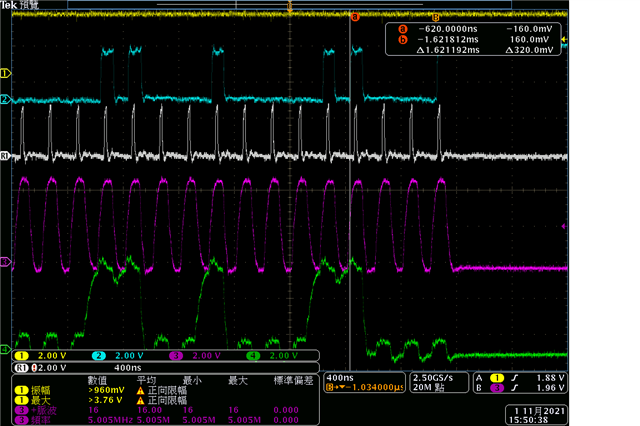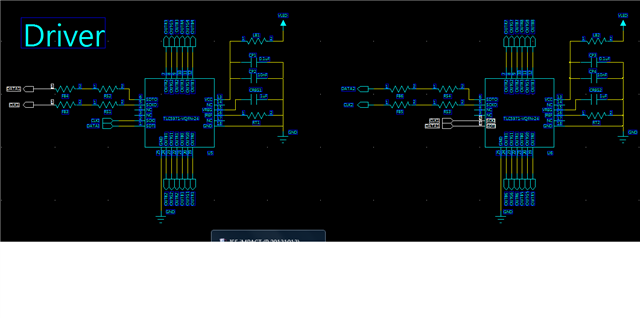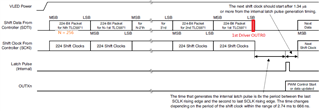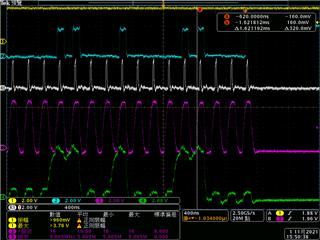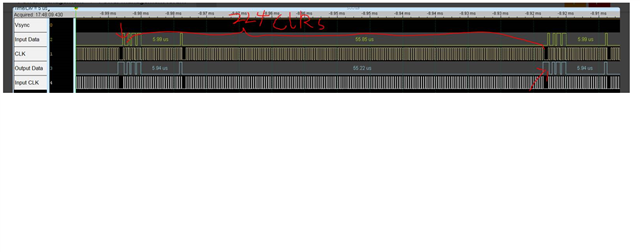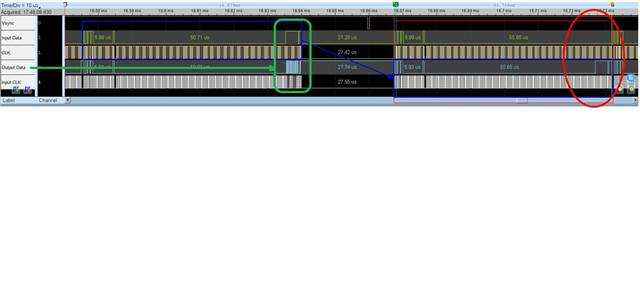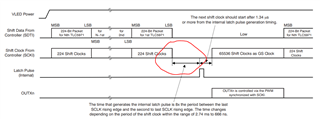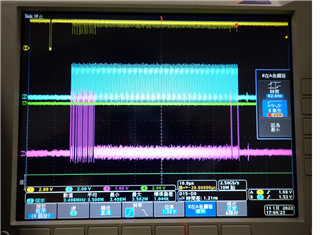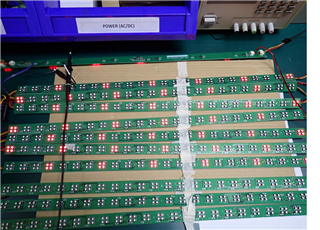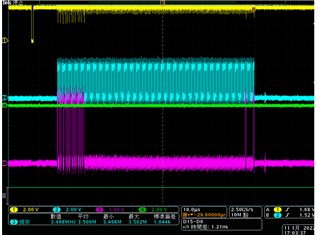Hi
When the customer lights up the TLC5971 light bar, they find that if the OUTR0 of the first driver is turned on, some strange data will appear in the SDTO and SCKO output waveforms of the driver, causing the OUTR0 of the second Driver to be lit (see attachment) , thanks.
Red wave: SDTI of the first driver
Green wave type: SCKI of the first driver
Blue wave type: SDTO of the first driver, SDTI of the second driver
White wave type: SCKO of the first driver, SCKI of the second driver
